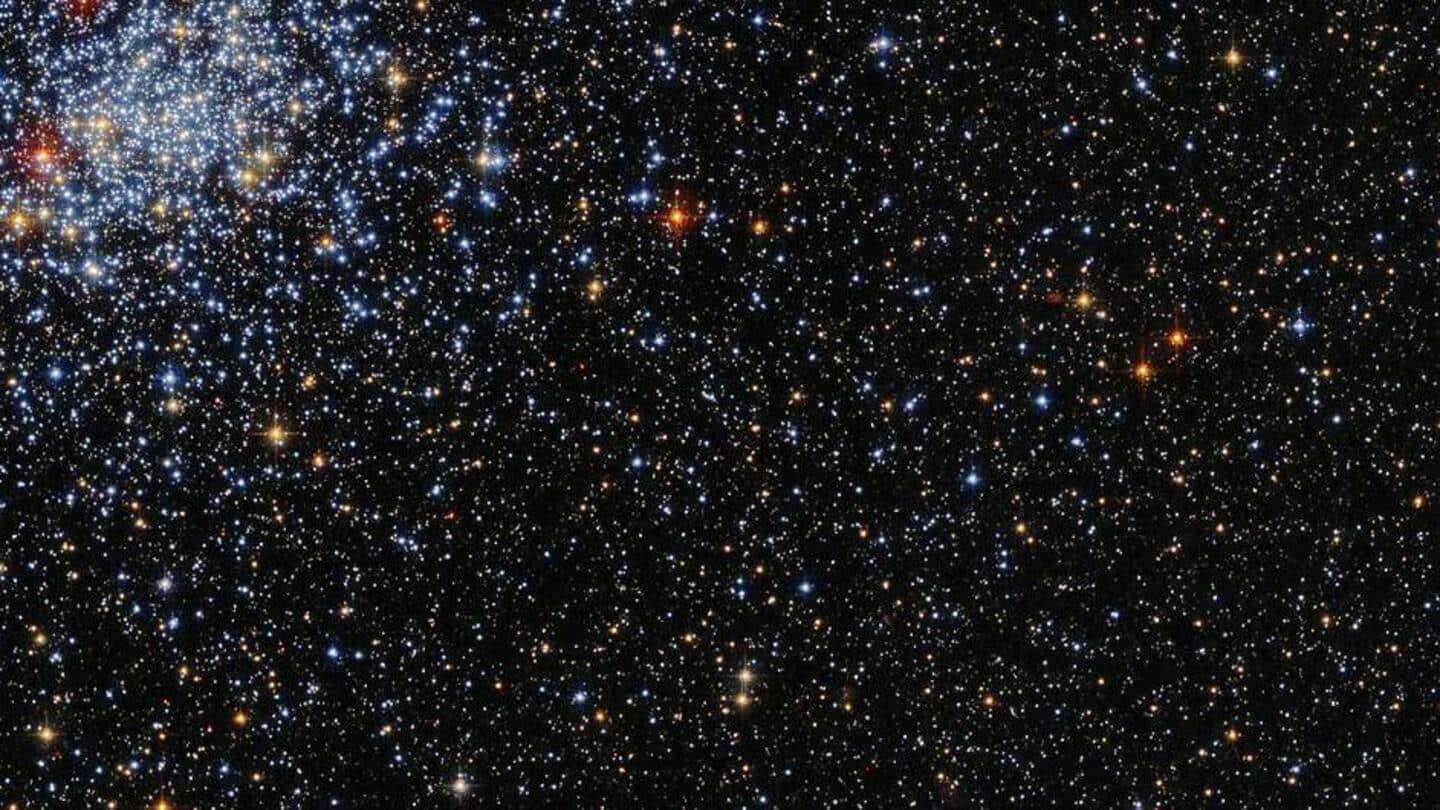
NASA's Hubble Telescope captures blue star cluster 150,000 light-years away
What's the story
NASA's Hubble Space Telescope's newest image reveals a 'brilliant blue' star cluster, called the NGC 2031 which lies approximately 150,000 light-years from Earth. This globular star cluster is located in the constellation Mensa in the Large Magellanic Cloud (LMC), which is a satellite galaxy of our own Milky Way. LMC is visible to an unaided eye from the Southern Hemisphere.
Context
Why does this story matter?
Hubble was the first major optical telescope to be placed in space. The 43.5 feet solar-powered telescope was launched in April 1990. It is positioned 535 kilometers above the Earth and completes one orbit every 95 minutes. The NGC 2031 star cluster is approximately 140 million years old and its mass is 3,000 times that of our Sun.
Details
The stars in NGC 2031 are used as 'cosmic yardsticks'
NGC 2031, seen at the top-left corner of Hubble's star-studded image, appears to have a spherical shape because of the mutual gravitational attraction between the stars. This cluster contains at least 14 Cepheid variable stars, which are stars that brighten and dim periodically. They are used as 'cosmic yardsticks' which can help astronomers determine the star's distance from us.
Location
NGC 2031 lives in an extremely dense portion of LMC
The blue NGC 2031 cluster is located in a crowded starry region of the LMC galaxy. This results in 'stellar contamination' which is a phenomenon that arises when the atmospheres and surface features of neighboring stars interfere with the measurements of objects under study. It is one of the theories that can explain why the star cluster is observed as blue.
Theories
Blue stranglers form later than their neighboring stars
"Stars like these typically burn very hot and have short lifespans, but globular clusters are known for housing only ancient stars," explained NASA. Another theory suggests that the bright blue stars are 'blue stragglers.' "Blue stragglers are thought to form from the merging of two old, red stars resulting in a star with greater mass and therefore bluer color," added the space agency.